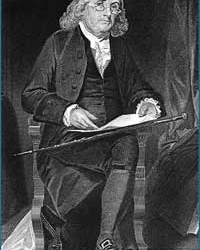Christiane Nusslein-Volhard is a German biologist who was awarded the Nobel Prize in Physiology or Medicine in 1995, along with Eric Wieschaus and Edward Lewis, for their research on genetic control during embryonic development.
“The Flies Follow Me in My Dreams”
Christiane Nusslein-Volhard was born on October 20, 1942, in Frankfurt, Germany. Her father was an architect. Although she frequently studied art and learned to play the flute, Nusslein-Volhard was more interested in plants and animals. By the age of 12, she realized she wanted to become a biologist.
At Eberhard-Karl University in Tübingen, Nusslein-Volhard graduated with a degree in Biochemistry in 1968 and earned her Ph.D. in 1974 from the University of Tübingen, where she researched the interaction between protein-DNA and the binding of RNA polymerase in Escherichia coli. After fellowships in Basel and Freiburg, she joined Wieschaus as a group leader at the European Molecular Biology Laboratory in Heidelberg in 1978. In 1981, she returned to Tübingen, where she served as the Director of the Max Planck Institute for Developmental Biology until 2015.
In the laboratory, Christiane Nusslein-Volhard studied the molecular structures of the embryo of the fruit fly Drosophila melanogaster. “I was immediately fascinated when working with the flies. They intrigued me and followed me even into my dreams,” said Christiane Nusslein-Volhard.

Christiane Nusslein-Volhard conducting science in her youth.
Nusslein-Volhard worked with Klaus Sander, an insect embryologist. Sander’s experiments influenced Nusslein-Volhard’s thinking about fruit fly research. Nusslein-Volhard and Eric Wieschaus spent over a year breeding 40,000 fruit fly strains and systematically examining their gene structures using a compound microscope.
Their trial-and-error method led to the discovery that out of 20,000 fruit fly genes, about 5,000 were considered crucial for early development, and approximately 140 genes were essential. They attributed the responsibility for the embryonic development of fruit flies to three types of genetics: gap genes, which create the body plan from head to tail; pair-rule genes, which determine body segmentation; and polarity genes, which establish the repeating structures within each segment. They induced random mutations in fruit flies using EMS (ethyl methanesulfonate). Some of these mutations affected genes related to embryonic development.
Nusslein-Volhard and Wieschaus utilized the segmented form of Drosophila larvae to unravel the logic of the genes controlling development. Subsequent studies on these mutations and their interactions led to significant new insights into the early development of Drosophila, particularly the mechanisms underlying the stepwise development of body segments.
In the early 1990s, Nusslein-Volhard began researching the genes controlling development in the zebrafish Danio rerio. These organisms are ideal models for developmental biology investigations due to their transparent embryos, rapid reproductive rates, and close evolutionary relationship with other vertebrates.
Nusslein-Volhard studied the movement of cells from their origin to their target locations in zebrafish embryos. Her research on zebrafish has shed light on genes and other cellular substances related to human development and the regulation of normal human physiology.
At that time, very little was known about the genetic and molecular mechanisms by which multicellular organisms develop from single cells into complex morphological forms during embryogenesis. She hoped that combining various studies and systems within a laboratory could provide a foundation for a broader understanding of the complex development of animal and human life.
By 1993, Nusslein-Volhard had established a fish laboratory operated by 16 researchers with nearly 7,000 fish tanks. Three years later, her laboratory published a manuscript describing 1,200 mutant zebrafish, showing that, like Drosophila, a large number of development-related mutations could be obtained in a vertebrate species.
Nusslein-Volhard has received numerous awards. In 1986, she was awarded the Leibniz Prize from the German Research Foundation. In 1989, she received the Carus Prize from the Academy of Sciences in Germany. In the 1990s, Nusslein-Volhard was awarded the Rosenstiel Medal and won the Albert Lasker Basic Medical Research Award in 1991.
Supporting Young Women in Science
In 1995, she was awarded the Nobel Prize in Medicine for her discoveries related to genetics during the early developmental stages of embryos, along with two other scientists, Eric Wieschaus and Edward Lewis. Christiane Nusslein-Volhard did not anticipate the success of this research and how her inventions and explorations would be relevant to medicine.

She established the Christiane Nusslein-Volhard Foundation to support young women in science.
The fundamental principles she derived from her fruit fly research are also applicable to vertebrates, including humans. Her significant inventions and contributions have provided practical benefits, serving science in general and humanity in particular. Her discoveries have profound implications for understanding human reproduction. Scientists have named asteroid 15811 in honor of Nusslein-Volhard’s contributions to world medicine.
Christiane Nusslein-Volhard used a large portion of her Nobel Prize money to fund the Christiane Nusslein-Volhard Foundation, with the sole purpose of supporting young women in science, enabling them to dedicate more time to their scientific endeavors. In 2004, Nusslein-Volhard established the Christiane Nusslein-Volhard Fund to support promising young female scientists in Germany who are raising young children. The fund focuses on facilitating childcare, allowing female researchers to work with peace of mind.
“They are dedicated researchers. Their children are cared for full-time during working hours. But in the hours after that, when male colleagues and childless female colleagues are focused on reading or research, the women with children are washing dishes and doing household chores. They stay home after workshops because they lack overnight childcare. Exhausted and demoralized, some have abandoned their scientific goals to pursue careers that better accommodate the daily demands of family life,” she shared.
Since 2001, she has been a member of the National Ethics Council of Germany (Nationaler Ethikrat). Through her research, in 2002, she published the book “Zebrafish: A Practical Approach”, a laboratory manual outlining practical principles for working with this species. Subsequently, zebrafish became a standard vertebrate research model due to their similarities to mammals and rapid embryonic development. She has also published several other books on genetics.





















































